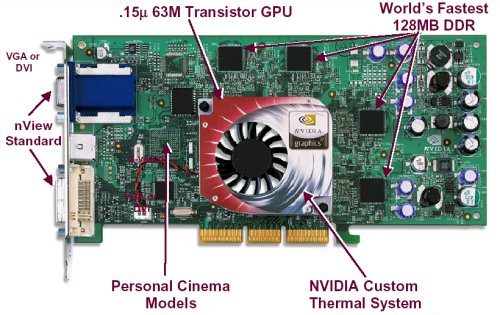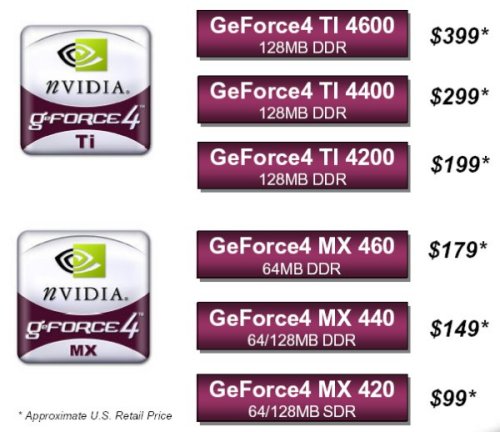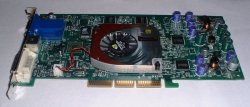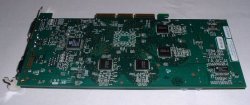
One of the things most notable about the new Ti boards are their size and the amount of onboard circuitry, quite a bit of which pertains to voltage regulation. I commented to Dan Vivoli that, with the GeForce4 Ti chip using the same fabrication process as the GF3s, has more transistors, and is running at a considerably faster speed, the heat build-up should be significantly greater than that of its predecessor—and explains the new chip packaging. I asked whether or not the voltage regulation circuitry would actually clock the chip down to prevent damage in the case of excessive heat, as with Intel’s Pentium 4s. The GeForce 4s, however, will not do this, though they do come with a thermal sensor that will shut the chip off if it begins to overheat.
When asked, Dan also stated that GeForce4 was not initially targeted for a .13um process, and was always scheduled to be .15um. When asked why the production of these chips wasn’t accelerated last fall instead of the GF3 Ti’s being released, Dan stated that nVIDIA isn’t fully confident that the .13um process will be ready and available for even their next graphics processor. It was also confirmed that the Ti processors would not feature any advancements on the AGP bus side. In other words, the rumoured AGP 8X support was skipped with this generation of chips since no motherboard chipsets currently boast the feature.
When questioned as to the level of pixel shader support in comparison to ATi’s hardware, Dan was adamant that the GeForce4 Ti is able to reproduce anything ATi’s hardware could, though it might be achieved differently. Some ATi reps have posted fairly negative comments about such claims from nVIDIA; the truth, as is often the case in these situations, most likely lies somewhere in the middle. Regardless of these DX8 feudings, Dan seemed fairly confident that nVIDIA, as in the past, would again be the first company with hardware supporting the latest revision of MS’ API when DX9 is released this fall.
The pricing slide of the presentation also contained a
small nugget of information, notably the inclusion of a GeForce4 Ti 4200.With
GF3’s being replaced entirely by GeForce4 products there would not have been a
direct replacement to GeForce3 Ti 200; the GeForce4 Ti 4200’s price point looks
to take up that position, so presumably it will consist of a slower chip paired
with slower DDR memory. When this will be formally introduced is unknown.



